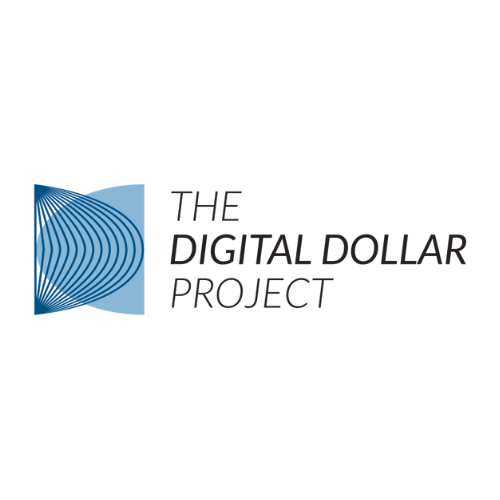Date: Wednesday 31 January 2024
Location: London, UK
To mark our 2nd anniversary, on 31 January, the Digital Pound Foundation held an in-person event examining developments in new forms of digital money, looking back at the key highlights of 2023, as well as ahead to 2024, with a particular focus on policy development globally.
The event opened with a keynote on ‘Framing CBDC in a structured response to ongoing debates and developments’ delivered by David G.W Birch, and then led into a panel discussion focussing on stablecoin regulation in the UK.
David Birch is an advisor and commentator on digital financial services and author of The Currency Cold War, Before Babylon, Beyond Bitcoin, and Identity is the New Money. He opened his presentation by commenting that changes in payments’ infrastructure are generational changes – they take a long time because people are very conservative. The shift to having some kind of digital currency is a once-in-a-generation event which must be right for everybody. So where have we got to? If you look around the world, there are many different CBDC pilots and experiments going on but are they real archetypes or templates for the next generation? Or are they just experiments?
If you survey the Central Banks, what are they doing in practice? The Bank of England’s general view that this is going to take a long time to get right is probably correct. It’s quite hard to establish what people want. It is no good going down the street with a clipboard saying: “Here’s something you’ve never heard of and you haven’t the faintest idea what it is? Are you in favour of it?” We are a long way from being able to decide what kind of digital Pound we want or what that should look like. Are Central Bank pilots really meaningful or representative of the next generation of digital currency?
The Bank of England’s consultation came out in January 2024 and had over 50,000 responses. What did it say at a high level? It essentially said that nothing’s going to happen for a while because a digital Pound would require primary legislation to be introduced. There was a strong emphasis on privacy and not accessing individuals’ data but, in reality, programmability is likely to be one of the key reasons why the Government wants to introduce digital money. So even all of those 50,000 responses didn’t take us any closer to knowing what a digital Pound may look like. Civil society is not yet able to answer that question. In David’s view, CBDCs should be designed to reflect societal values, not just technologists’ preferences.
Digital currencies and their potential uses
Having said that, what can we say about CBDCs that is useful to help begin that engagement and that discussion? In David’s analysis, CBDCs are a kind of stablecoin. What ‘stablecoin’ originally meant was a coin where the value was algorithmically fixed. If we assume that algorithmic stablecoins are not going to work, we are left with two ways of stabilising some form of fungible token. Either the currency is stabilised by holding reserves in other currencies or by receipts against fungible commodities themselves. In the long run, digital assets have potential to take over from fiat currencies. If we have markets that continuously trade liquid, fungible digital assets, we will no longer need money as an intermediary, because you can directly trade baskets of assets instead of converting them into money. But in the short term, there will still be a need for some form of reserve, either public or private. So we have two choices, we can make it public or private.
Even if we decide we want it to be public, that still leaves us with three different kinds of Central Bank Digital Currency (CBDC) to think about. The German Banking Association definitions, which are very conservative, outline 3 types of CBDC: a wholesale CBDC for institutions; a retail CBDC that people are going to use to pay each other and to pay companies and since most transactions are going to be between machines, not between people, we also want machine CBDCs.
In terms of a retail CBDC, which is what is being discussed here, then, in the short term, there are issues to do with sovereignty. If nobody in England is using Pounds, it’s a bit difficult being the Chancellor of the Exchequer. Fiat currencies are also an expression of value and power and there a real issue arises because in most of the world, most of the time, most people require US dollars. Approximately half of all the Federal Reserve notes in circulation are in Argentina. Argentina has by far the biggest dollar cash holdings outside the US. We need more focus on these economic and social issues when we think about what people want a CBDC to do.
How do you prioritise social policy, law enforcement or financial inclusion? You can’t just leave it to technologists to arbitrarily decide what priority these aspects should have. But the public – and indeed often politicians – don’t currently understand enough about it to do that. But over the next three to five years, some of those decisions are going to have to be made.
Potential impact on society
Offline use of digital currencies will be important so that, for example, users are still able to purchase basic groceries even during natural disasters. We have a 3-5 year timescale to examine the goals of a digital pound, aligning with the Bank of England’s design principles.
There are three ways to implement digital money: hardware, software, and nature (using quantum computers). We can map these options to different types of digital currencies, including offline programmable retail CBDCs, industrial CBDCs, and wholesale CBDCs. Decentralisation is key to scaling CBDC. In the future, AI is also likely to dominate financial transactions, reducing human involvement. Providing API access and permissions can unlock innovation, leading to unforeseen products and services for generations to come.
Panel discussion – Stablecoin regulation in the UK
The expert panel comprised:
- Andrew Whitworth, Policy Director, EMEA – Ripple (Moderator)
- Elise Soucie, Director of Policy & Regulation – Global Digital Finance (GDF)
- Laura Navaratnam, UK Policy Lead – Crypto Council for Innovation, and
- Claire Conby, Co-Founder, Head of UK – OneStep Financial
Key questions shaping the discussion included:
- How has the implementation of a well-designed digital Pound advanced in the UK?
- How will stablecoins be regulated and what are the resulting prospects for the stablecoin market?
- How is the wider global landscape for new forms of digital money affecting what happens here in the UK?
Building on David Birch’s keynote, the panel began by opening into a broader discussion of stablecoin regulation in the UK and raised concerns about the FCA’s requirements for stablecoin issuers, including the need for excess reserves and the strict separation of assets. They also questioned the need for additional regulation in the payment range aspect of stablecoins, suggesting that vertical integration could be beneficial. While the FCA seems to be taking a forward-leaning approach to stablecoins, some key details are missing from the Bank of England’s recent discussion paper on systemic stablecoins. Some punitive requirements mentioned in the paper might impact the viability of stablecoins in the UK.
Regulators should encourage firms to be future-proof by demonstrating risk mitigation strategies. Firms still need to be able to navigate complex business opportunities despite the rapidly-changing regulatory landscape.
It is really important for all sides to understand the interaction between use cases, business models, and regulations in the context of digital currencies. Traditional banks have responded to the growing conversation around digital currencies by accelerating their own innovation and adoption efforts in the past six months.
Stablecoins are important for retail and machine payments but there needs to be innovation across the entire ecosystem including the wholesale side. Interest in tokenised deposits is growing within traditional finance but we need to distinguish between tokenised deposits and stablecoins, which are backed by reserve assets. A consortium for commercial bank lending might help to make deposits more sustainable.
Crypto regulation and industry responsibility
The panel noted that the broader ecosystem needs to be considered when discussing stablecoins, thinking back, for example, to Facebook’s early role in bringing them to regulators’ attention with its now defunct Libra/Diem project.
Policymakers should take a holistic approach to understanding what people want from payments infrastructure, rather than simply focusing on philosophical considerations.
The Facebook example – and the panic it created – shows how industry and policymakers need to work together to proactively address future challenges before they become crises.
Designing and implementing digital currencies
We need more compelling use cases for digital currencies. Examples might include a parking app that charges by the minute or a trade finance platform that locks in prices until goods are received. There is a need for innovation in the sustainability space to make a real difference, such as facilitating payments to temporary workers on a mushroom-picking farm. We need more education and awareness to help people understand the potential of digital money and to be able to demonstrate concrete actions to build collaboration and drive progress.
Digital finance regulation and shadow banking risks
If digital currencies are going to accelerate, we need future-proof, tech-neutral regulation globally to provide regulatory certainty for multinational businesses and ensure cooperation at the international level. The end user must also be considered in developing digital finance products, focusing on their needs and understanding their perspectives. New forms of money should be regulated as narrow banks, not shadow banks, to avoid exacerbating risky habits in the financial industry. Concerns still exist about how these assets are backed and the commensurate risks, raising questions about the adequacy of current regulations.
Stablecoin regulation and risk management
Bank-issued stablecoins and tokenised deposits are different and present different associated risks. Stablecoins differ from traditional bank money because they are fully backed by assets, unlike bank money which is only partially backed by reserves. The level of regulation for stablecoins should be determined based on the level of risk they present, with different requirements for retail and wholesale stablecoins.
Digital currencies, financial literacy and sustainability
The success of CBDCs depends on offering something beyond traditional payments, such as programmable payments or embedded finance. Wholesale CBDCs may be more compelling than retail CBDCs in countries like the UK due to faster rollout and less concern about retail consumer protections. Financial literacy may not be not a viable solution for improving consumer protection in the digital age but AI may offer us a route forward.
Digital currency versus cryptocurrency
Traditional/fiat money has limitations some of which may be addressed by the potential benefits of alternative forms of currency, such as bitcoin. Bitcoin has its own set of limitations and potential drawbacks but could be a viable option for those seeking a store of value that maintains its value over time. The use case for a digital Pound is different from the use case of cryptocurrencies like bitcoin but each has its place in the ecosystem of new forms of digital money.
If you are interested to attending one of our future events, or indeed becoming part of the Digital Pound Foundation’s membership community, you can start by subscribing to our mailing list and visiting our membership page.
































































